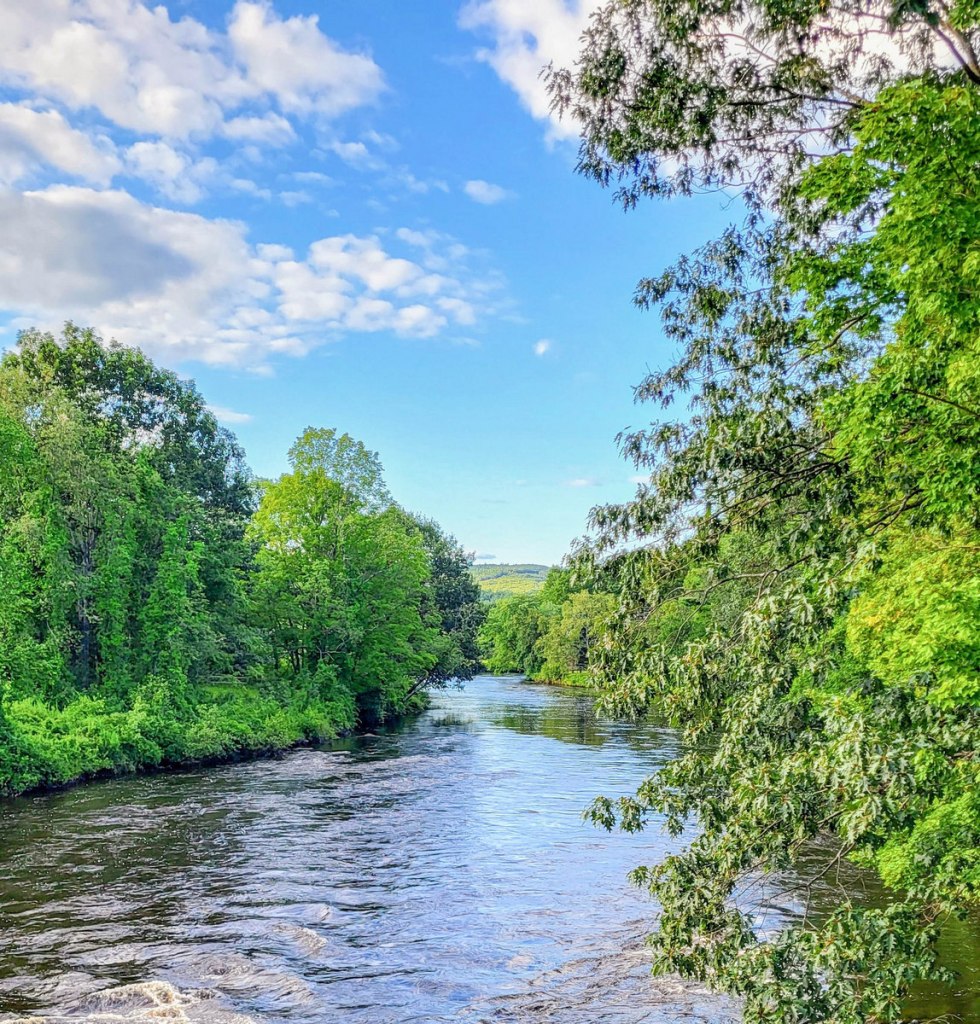
The Ashuelot River in August is usually so low in places you can walk across it without getting your knees wet, but when I went there last week it was about as high as we like to see it. I have a feeling that someone somewhere opened the gates on a dam or something since then though, because two or three days after I took this shot the water had gone down considerably, and mud showed on the banks.

I went to the river to see if the beautiful cedar waxwings were there. At this time of year the sun has a certain slant at this location. In the evening insects are lit up by the light and I assume that the waxwings have an easier time seeing them. They wait in the trees and bushes and fly out and snap up mosquitoes, dragonflies, and other insects that happen to be flying through the shafts of light. There is a small maple tree there that has died and it’s a favorite perch, so I wait for them to get used to my being there and then try to get their photo when they land in it.

The waxwings love many of the berries that grow along the river such as the arrow wood viburnum berries seen here. Other berries that grow along the river in this immediate area are silky dogwood, pokeweed, wild grapes, Virginia creeper, and poison ivy, and waxwings love them all.

I like the way this waxwing was peeking up over the branches with its eyes probably on an unwary insect. I’ve seen them snatch dragonflies right off the bushes a few times. The waxwings move in small flocks and can strip a crabapple tree of its fruit in no time at all. The name “waxwing” comes from the way the tips of their wings look like they’ve been dipped in red wax. The undersides of their wings flash bright white in the evening sun and they are very beautiful. I love their little bandit mask and how sleek they are and how they dive, swoop and twirl in the air when chasing insects. If I had to make a list of favorite birds, cedar waxwings would be near the top.
I hope everyone is seeing and hearing their favorite birds this year. I downloaded the “Merlin” birding app from Google Play and it has opened a new world. Now, though I might not see a bird, I can record it and identify it with the app. It’s both amazing and fun, and I now know which songs are by which birds. I believe the free app also comes in an Apple version.

I went to a local park the other day to visit the small pond there. Usually there are hundreds of dragonflies there but on this day I had to struggle to find any. I sat on a bench wondering where they had all gone and then I saw several cedar waxwings streaking out of the trees and I knew. All the dragonflies were in hiding. From what I’ve seen of waxwings, they were wise to hide.
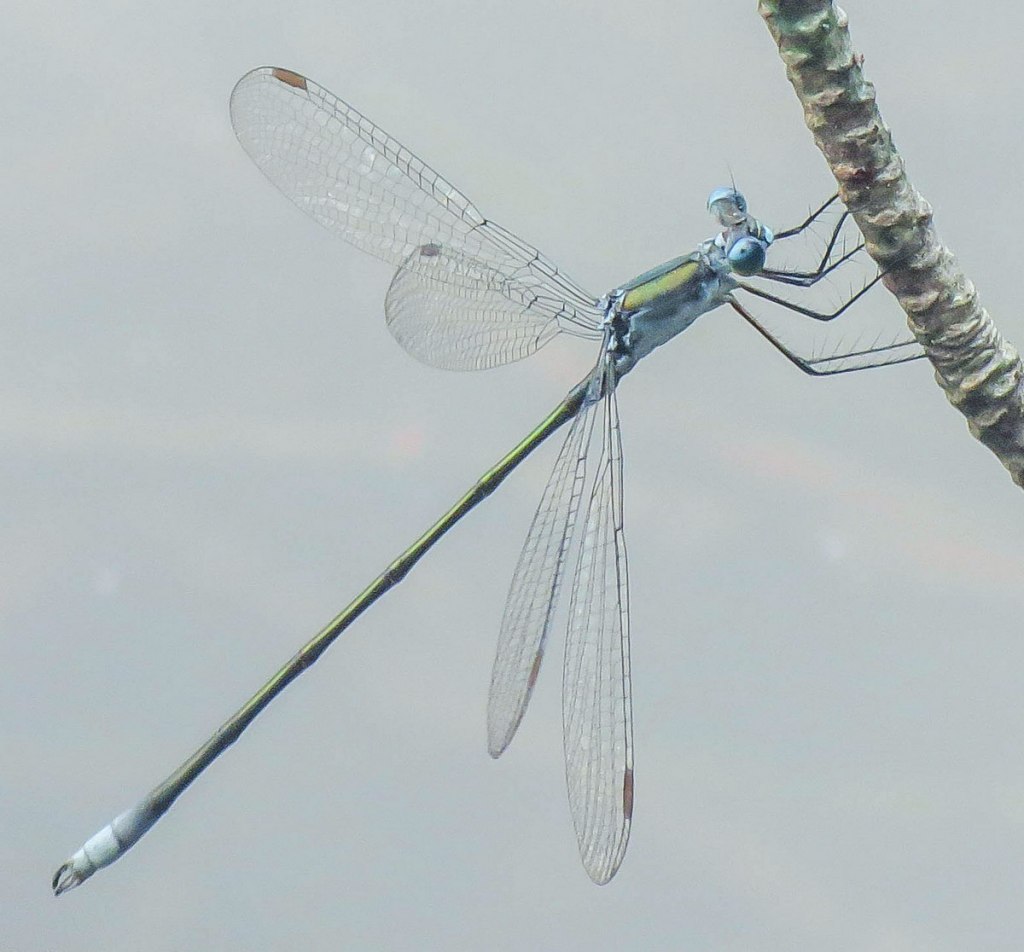
I’ve been trying to get better shots of the emerald spread wing damselflies. I’ve discovered a spot where they gather so I sit on a boulder on the pond shore and learn their habits, which are much the same as dragonflies. One noticeable difference is, these insects don’t have the same great speed as dragonflies. The “spread wing” part of the name comes from the way they keep their wings spread when at rest.

Unfortunately the spot where they gather at the pond is heavily shaded so I haven’t been completely happy with any shot I’ve gotten so far. This one does show the underside of its abdomen but doesn’t show the sky blue color that I had hoped to get. One day I’ll catch them perching in the sunshine and then I’ll be able to show you their beautiful colors the way they should be seen. Meanwhile I’ll wait.
One of the things that you come to understand quite quickly in nature study is that you will spend a lot of time just waiting and watching, because 99% of it is simply being in the right place at the right time. Knowing the habits of that which you study helps, but nature will always teach us patience one way or another.
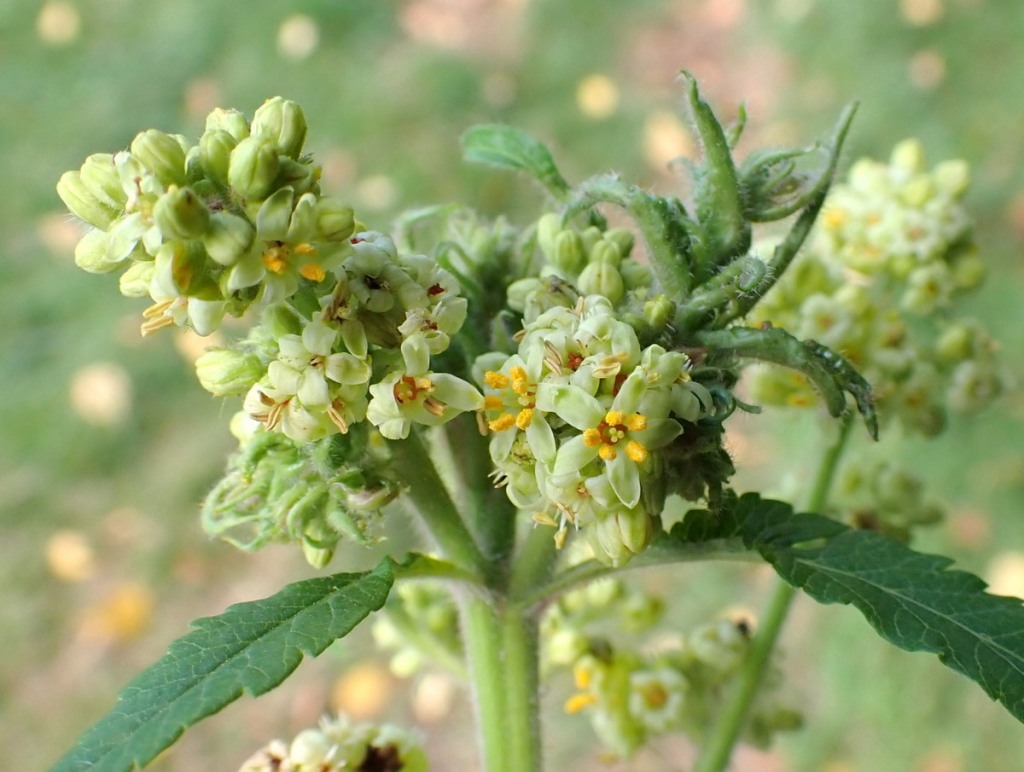
I found a staghorn sumac with a deformed flower head at the end of a branch. You can pick out 2 tiny flowers in full bloom there in the lower right. This is something few people ever see.

A fern shadow spilled over a log. This is what I mean when I say that no matter where you look there is beauty. It is always there, waiting for us to discover it.

A few of the Indian cucumber root plants are throwing in the towel and taking on their beautiful deep purple fall colors. The berries will soon be ripening on plants that have them.
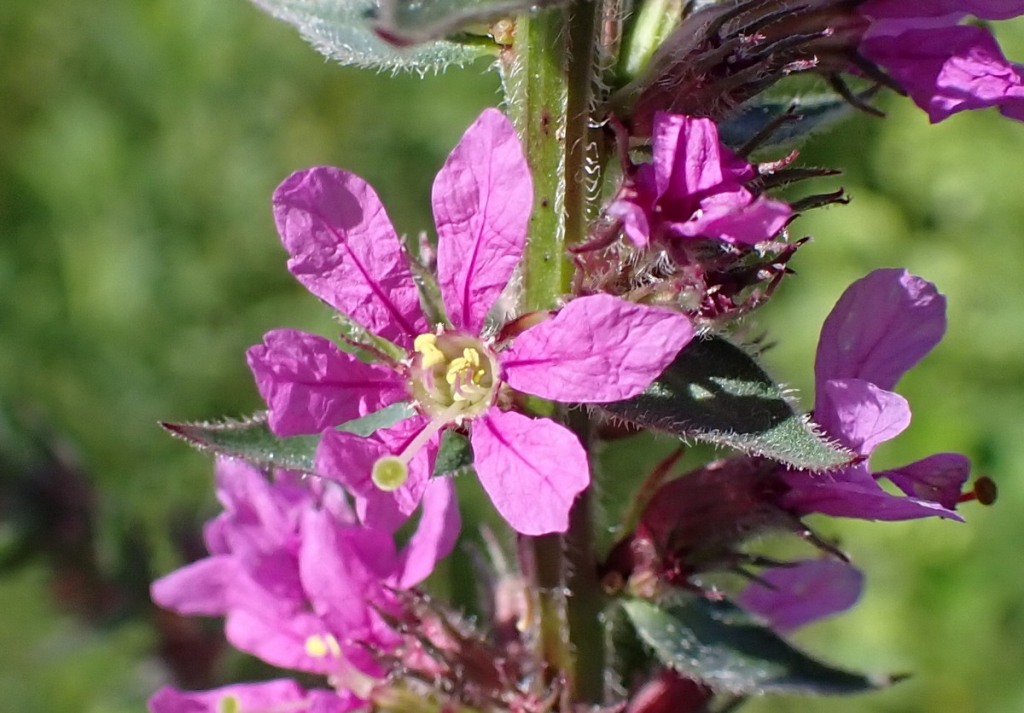
Purple loosestrife is one of our most invasive plants but I always have to admit that they’re quite pretty, even if do they look like someone hung them on the stalk before ironing them.

Joe Pye weed is blooming, with its wispy, thread like flower petals calling to all the insects. Bees and butterflies love them. Depending on which version of the story you believe a Native American named Joe Pye used this plant to heal, or the name of the plant he used was named Jopi. Either way the story points to the plant’s one time medicinal use.
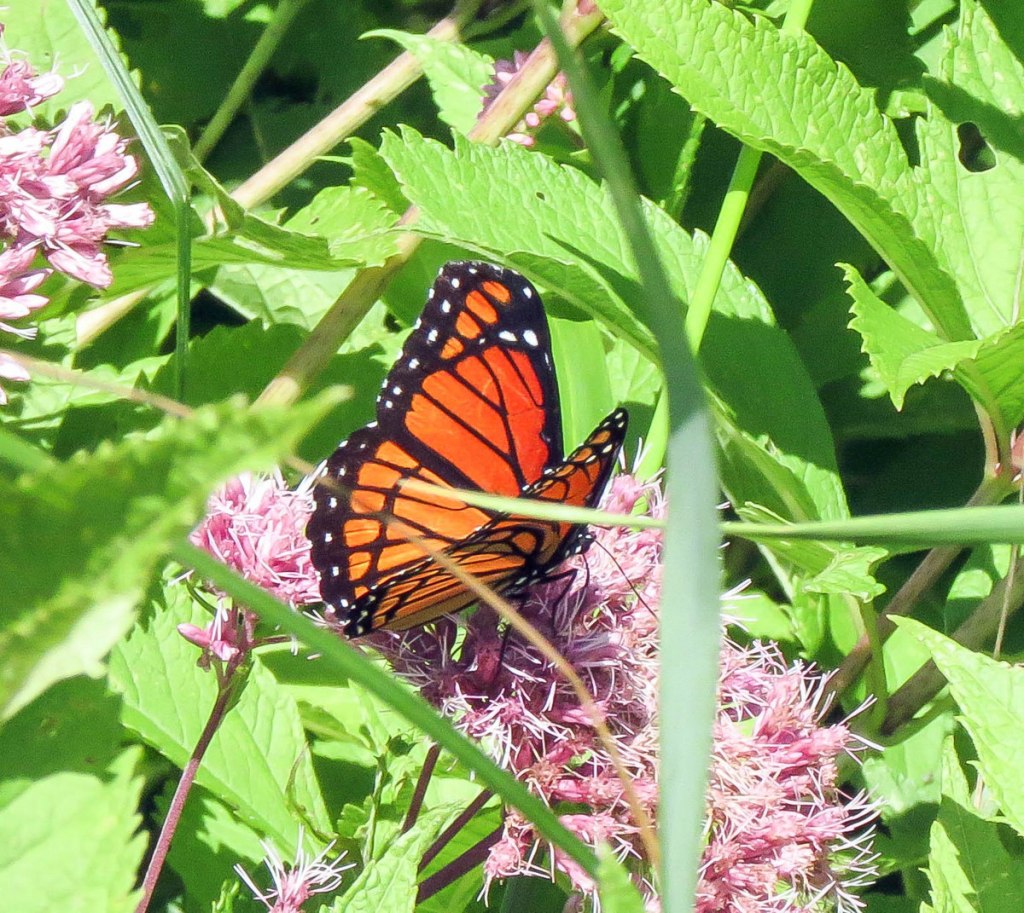
I was happy to see what I thought was a monarch butterfly on some Joe Pye weed but no, it was a viceroy, and I know that because of the black lines on its hind wings. Still, it’s a beautiful butterfly and there haven’t been many of those around this summer. I imagined that two months of rain had a lot to do with that but that can’t be it because Maryland is in drought and they have as few butterflies as we do.
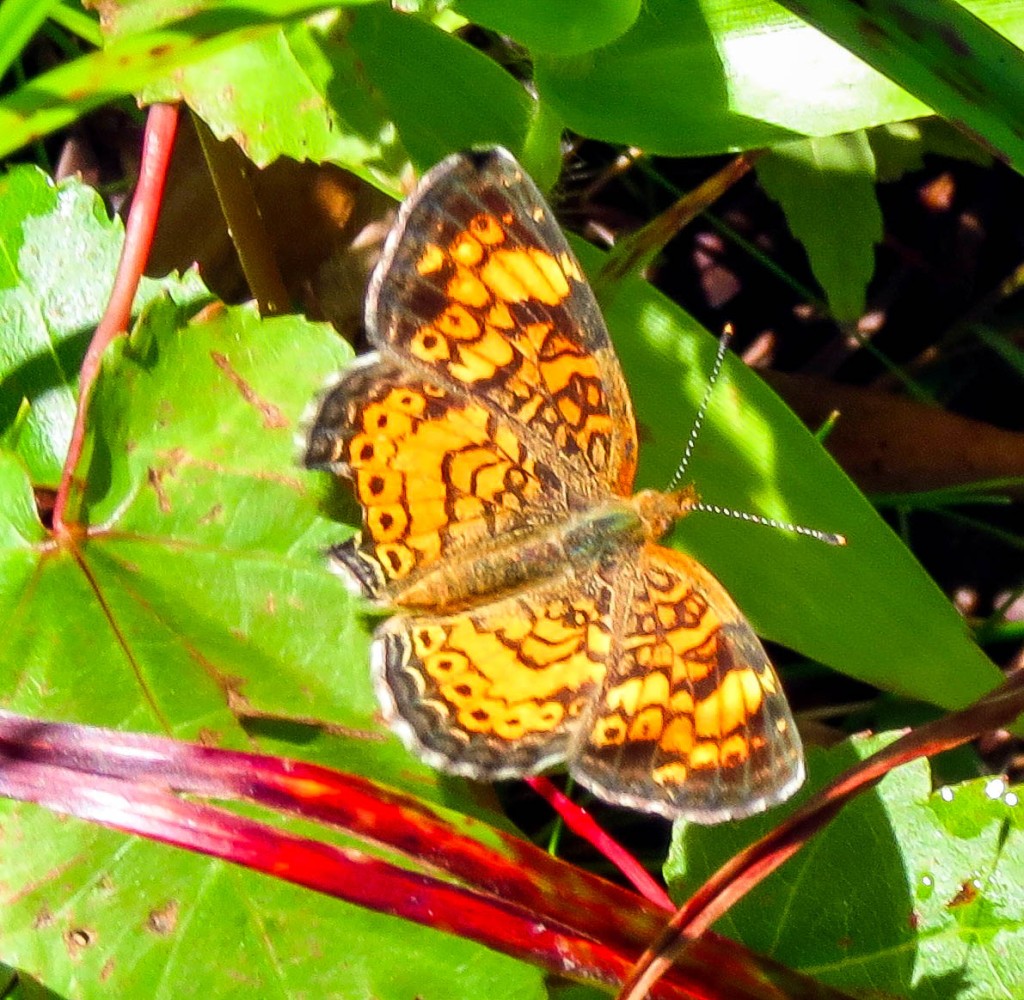
It was a very windy day when, as I walked through some tall grass, two pearl crescent butterflies flew a few feet ahead, always staying out of the wind by staying down low in the grass. This shot was a challenge because the camera kept wanting to focus on the grass and leaves instead of the butterfly. This butterfly is small and seems to be about the size of one wing of the bigger butterflies like monarchs or admirals.

One day I saw a very strange bird asleep on a log at a pond. You couldn’t see its face but one eye stared out of the photo I sent to a birding friend. He came back with the name Muscovy duck, which is a domesticated bird that will occasionally fly off into nature. It can’t fly as well as a wild duck or goose so it just kind of hangs out near water. The next day it was still there and it let me get a shot of its face. I saw then that it was an odd duck indeed. The Jimmy Durante of waterfowl. It was as big as a Canada goose.
A few days later I saw posters about a lost pet duck and sure enough, this was the duck I had seen. The poster said “she was very old, lost and probably scared” but she didn’t seem scared when I was near her. More curious than scared, I’d say. But anyhow, I called the phone number on the poster but didn’t get an answer, so hopefully they’ve found her.

Canada geese were in sight of the Muscovy duck, eating the same pond weeds that it eats. The duck will bully smaller wild ducks but it didn’t seem to want to tangle with the geese. That is probably wise.
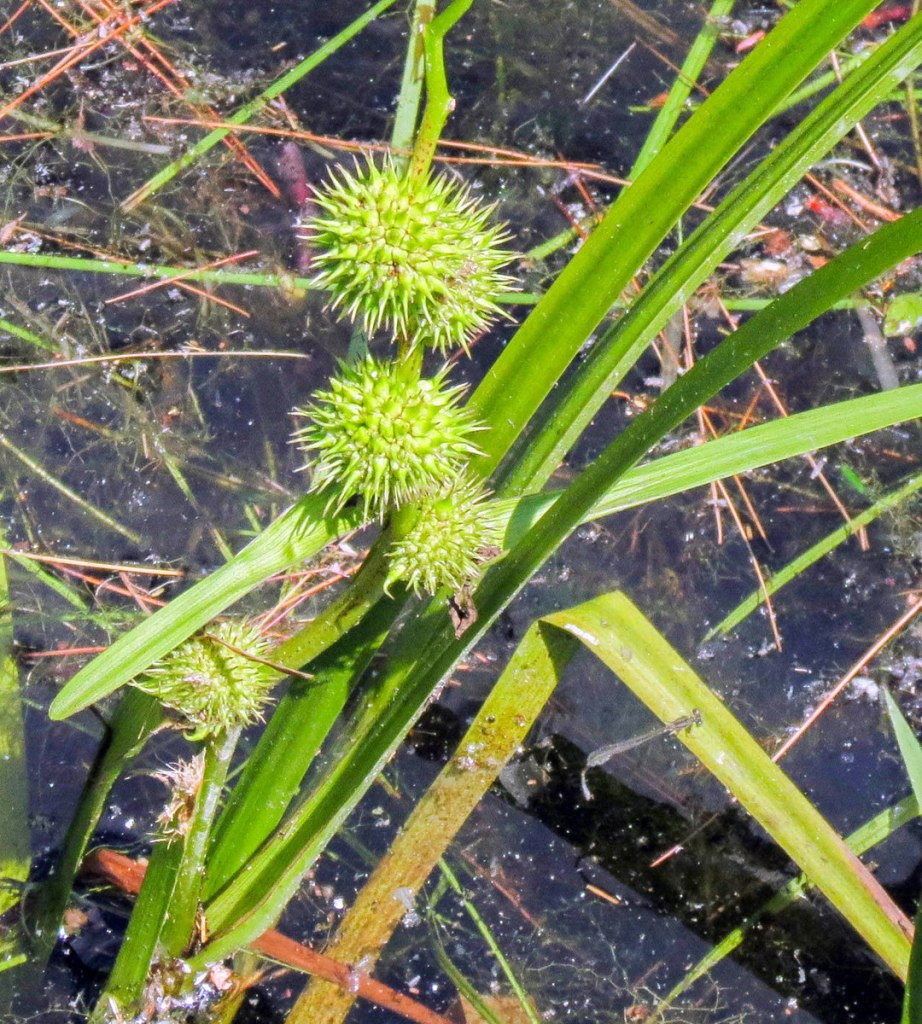
Soon they’ll all be eating the seeds of American bur reed, which dots the shallows here and there.
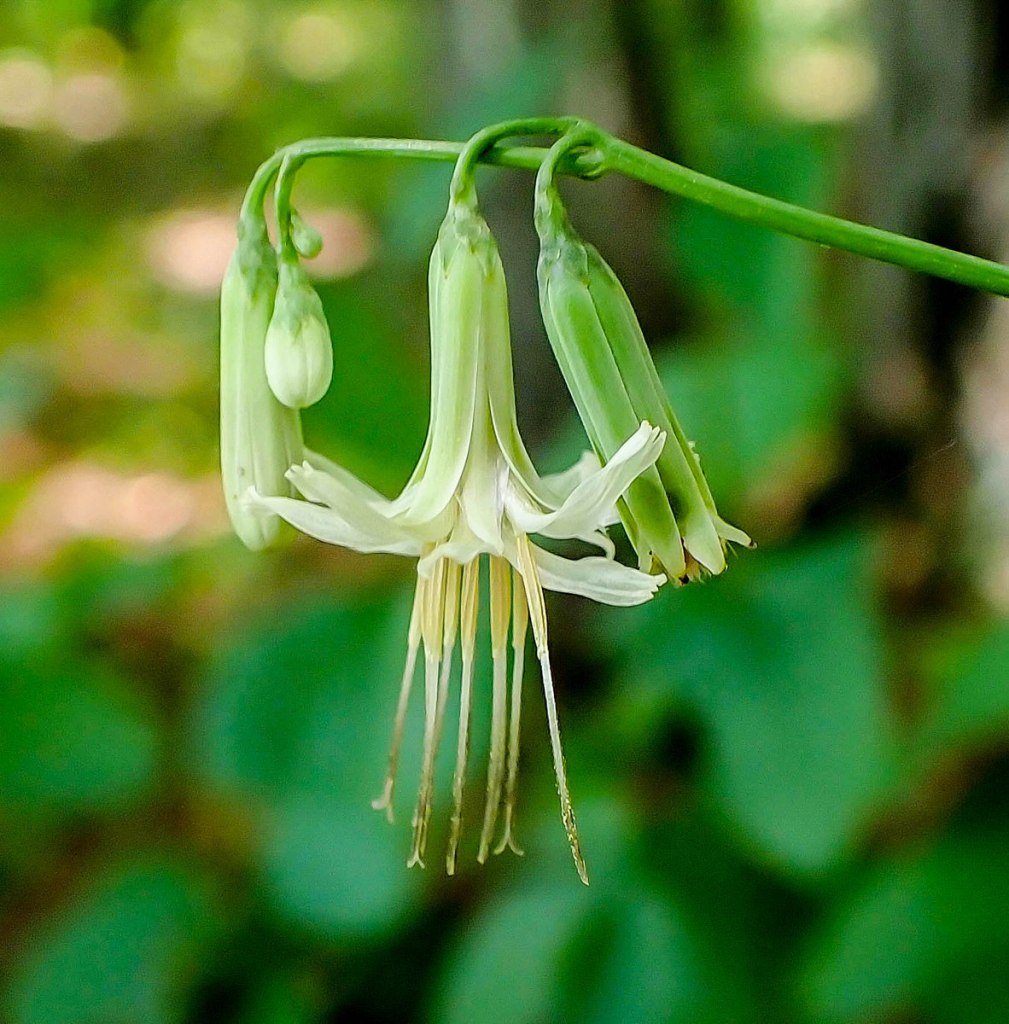
Tall white rattlesnake root was once used in a poultice by Native Americans to cure headache, fever, and rattlesnake bite. A tonic made from its bitter roots was also used in place of quinine by early settlers and it is also called gall of the earth due to its bitterness. I like its beautiful lily like white flowers, which always speak of quiet serenity to me. Nothing seems to bother this plant; I never see it eaten by insects or harmed by munching animals, and that could be because it is toxic. It is native to the northeastern and midwestern U.S. and will grow as far south as North Carolina.
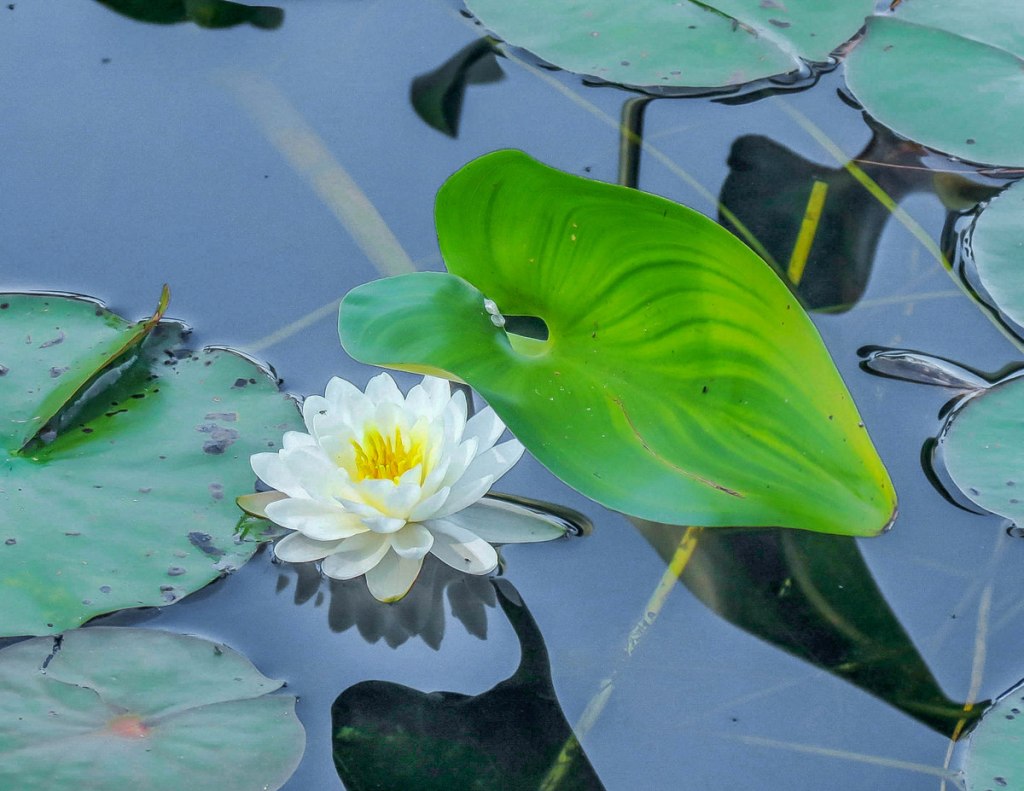
I like this scene for two reasons. The waterlily is obvious, but not so obvious is the pattern in the pickerel weed leaf. As fall gets closer these leaves will develop some beautiful and colorful flowing patterns. The light was also beautiful on this day. It looked like it was shining out from the water rather than on it.
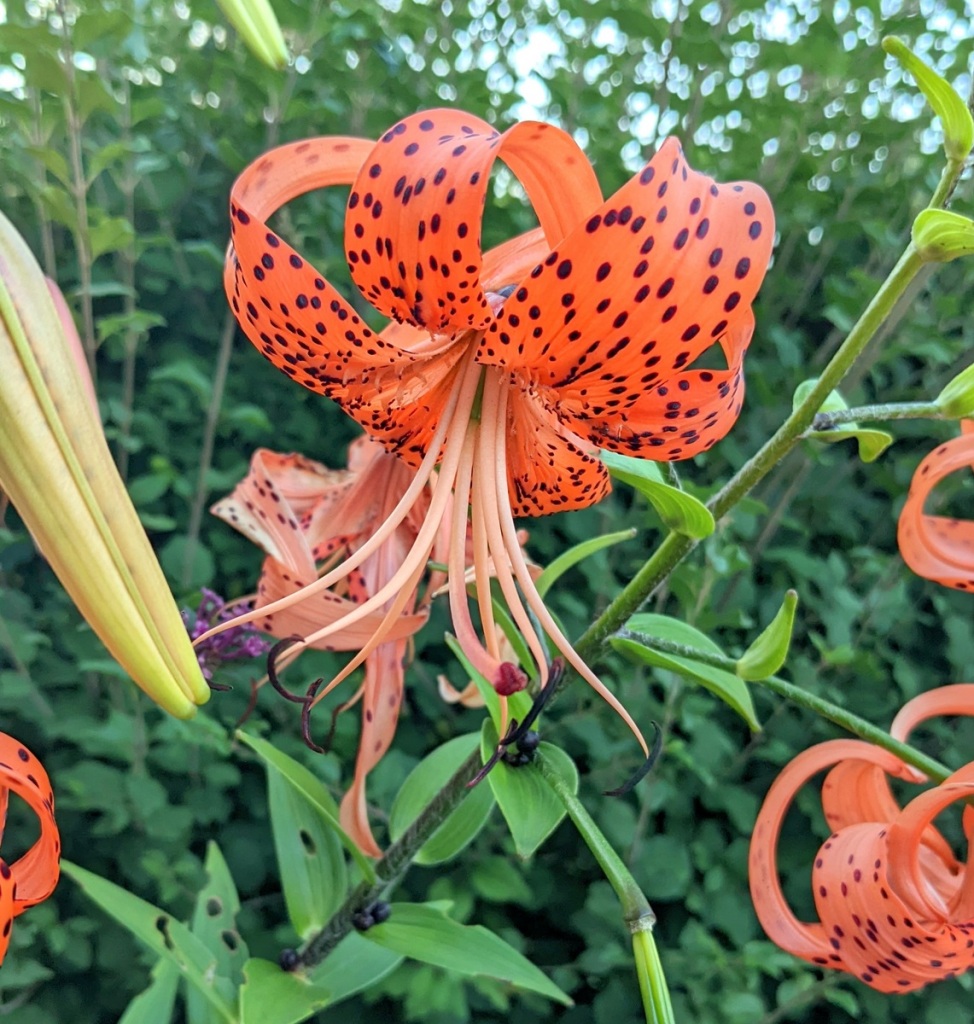
We used to call this a Turk’s cap lily but I don’t know if they’re still called that now when people are so easily offended by terminology which in truth, usually comes from ignorance rather than malice. But names don’t matter. It’s an unusually shaped flower in the lily family and one that I’ve never loved enough to grow. I found these growing in a local park.

When I walk through public gardens I’m always surprised to see plants that the people I used to work for wanted nothing to do with. Anything in the allium family was hands off, probably due to the way garlic chives could take over a garden. That meant nodding onion was also left out, which I think is too bad. It’s a plant that I could have used in some of the gardens I worked in.

I saw a petunia that made me think of a cloud.

I like the tree branch patterns in a balloon flower. They’re almost always there, as if the shadows of overhead branches are falling on the flower. I also love that shade of deep blue.

For those who don’t know, balloon flower gets its name from its balloon like buds, which look as if they’re full of gas. Really there is just air inside but they will make a soft popping sound if you squeeze them. They are native to Japan, Korea, China, and parts of Russia but are now grown all over the world. Cough syrup was once made from the plant’s roots but I’ve never heard how effective it was.

I see far more of this color bee balm than I do red these days, and I think that’s too bad because I liked the native red. I used to grow the red ones and I had bees and hummingbirds all over them. I’ve never seen a bee or a hummingbird on these plants but I can’t sit and watch for them like I could when I grew the red ones, so maybe they do attract the birds and bees. I hope they do.
In summer, the song sings itself. ~William Carlos Williams
Thanks for stopping in.